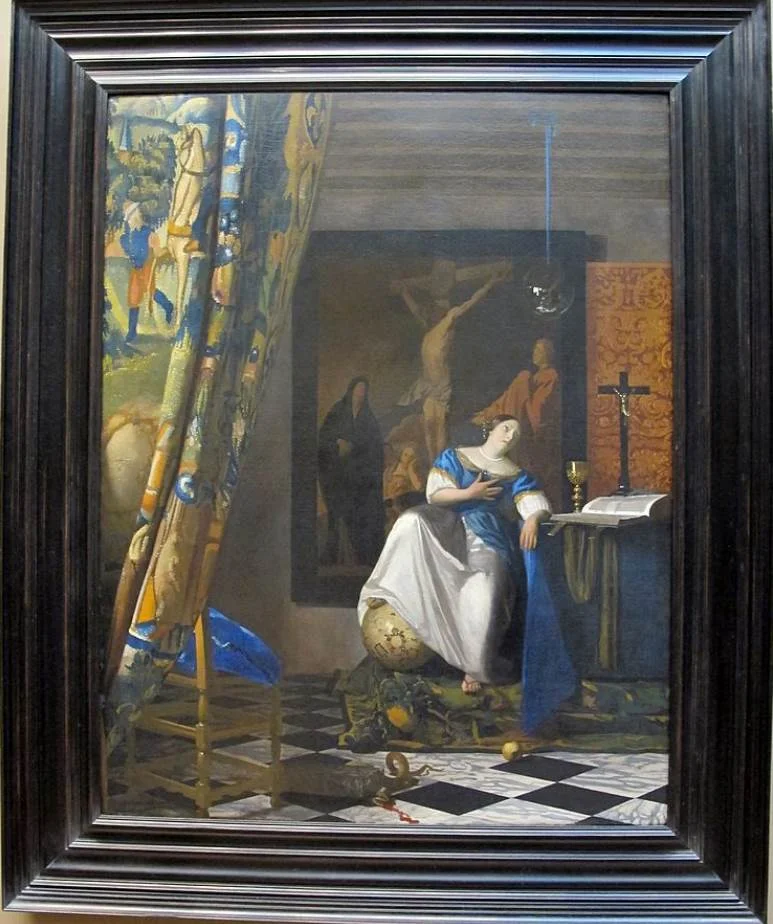Even though Dutch Golden Age artist Johannes “Jan” Vermeer (1632-1675) often sprinkled religious or historic symbols into his paintings, most of them revolve around domestic scenes and people, often women, doing ordinary things.
The work that is known as “The Allegory of Faith” or also sometimes “The Allegory of Catholic Faith” differs significantly in that sense from most of his other masterpieces.
Let’s take a closer look at this remarkable work of art from one of the more renowned artists of the Baroque era.
1. It was painted in the early 1670s
Dating a painting by Johannes Vermeer is a complicated task. That’s mainly because he only dated 3 paintings in his oeuvre which consists of just 34 convincingly attributed works and 3 additional ones that could potentially be of his hand.
Regardless, this painting was painted in the later years of his life, a period just before the “Year of Disaster” in 1672. This was the year that King Louis XIV invaded the Dutch Republic from the south, an event that abruptly ended the Dutch Golden Age.
This war was also the reason why he wasn’t able to sell any of his paintings anymore, probably making The Allegory of Faith one of the final commissions that he received. He died just 3 years later at the age of just 43.

2. It’s 1 of just 2 of his works that can be classified as history paintings
Even though the painting depicts a woman in a domestic scene, the subject of the painting makes it completely different from most of his other works. Only this work and a painting known as “The Art of Painting” are considered to be history paintings in his oeuvre.
Most of his other works depict people, mostly women, doing ordinary things inside the house. This painting depicts a woman as she holds her hand on her heart and looks up to a glass sphere that hangs from the ceiling.
Both of Vermeer’s paintings which are classified as history paintings feature a colorful tapestry that is pulled to the left for the viewer to see the complete scene.
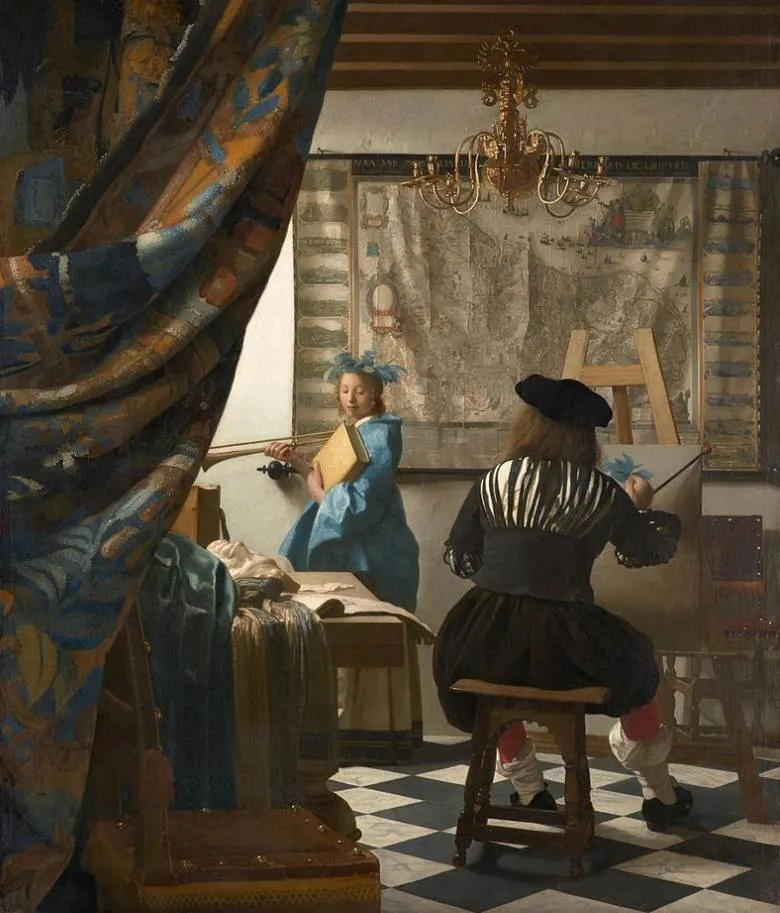
3. Vermeer integrated symbols inspired by an Italian iconographer

The woman in the painting represents Faith. Most of the symbols in the painting were derived from an emblem book called “Iconologia.”
This book was written by an Italian iconographer named “Cesare Ripa” (1555-1622) and depicts various allegorical images accompanied by poems. This book was widespread throughout Europe in the 17th century and was even translated into Dutch in 1644.
Some of these religious symbols derived from this work are the crushed snake (the sign of the Devil) and apple (the fruit from the Garden of Eden) in the foreground, the color of the woman’s clothes, and the gesture of her hand on her chest.
Ripa mentioned that Faith has “the world under her feet.” Vermeer literally painted a terrestrial globe representing this notion.
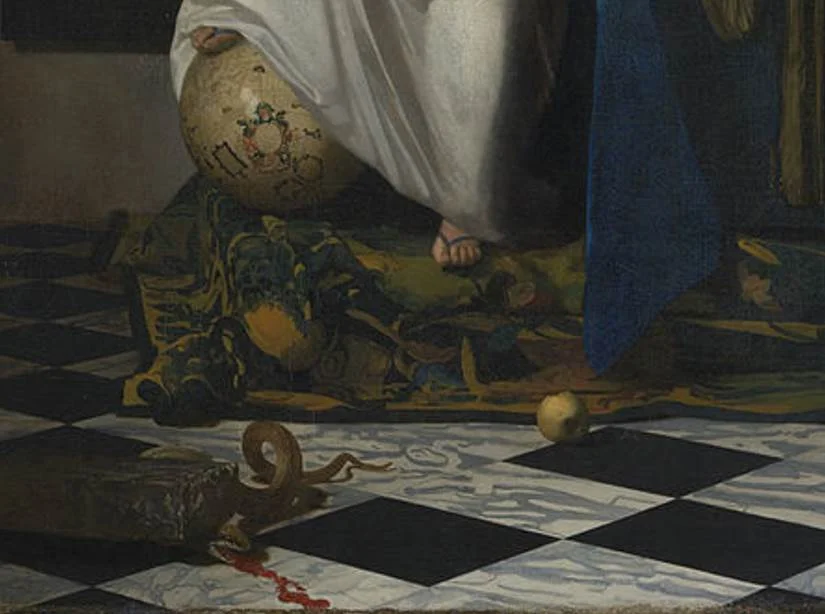
4. Art historian don’t consider it to be one his best works
While The Art of Painting is considered to be one of his most successful and unique works, the Allegory of Catholic Faith only receives a lukewarm appreciation from art historians.
It’s not as convincing as his other works and the woman appears to be out of touch with the true purpose of the theme. This is, however, the realistic style of Vermeer and most probably the reason why he didn’t indulge in creating multiple huge religious and historic works.
This does mean, however, that it’s a unique work in the artist’s oeuvre Even though the finely dressed Faith appears too worldly to be an allegory of herself, this very reason makes it one of the artist’s most remarkable paintings.
5. It changed hands multiple times before arriving in New York City
Something that emphasizes the notion that it’s not one of his best works is the fact that it was sold multiple times by the people who owned it. Most fine art appreciates, but The Allegory of Faith sometimes ended up being sold for less money as it changed hands during the late 17th and 18th centuries.
This was obviously a period in which Vermeer wasn’t the renowned artist we know today. This resulted in the painting being sold in various auctions for f400 in 1699, f500 in 1718, f53 in 1735, and f70 in 1749.
The painting was owned by various Dutch art collectors before making its way to Austria followed by Moscow as part of the collection of Russian landscape painter Ilya Ostroukhov (1855-1929).
Dutch art collector Abraham Bredius bought the work for DM700 in 1899 but disliked the work so much that he sold it yet again to an American art collector named Michael Friedsam from New York in 1928.
This man eventually bequeathed it to the Metropolitan Museum of Art as part of the Friedsam Collection, and it has been part of the collection of one of the most famous museums in the city since 1931.
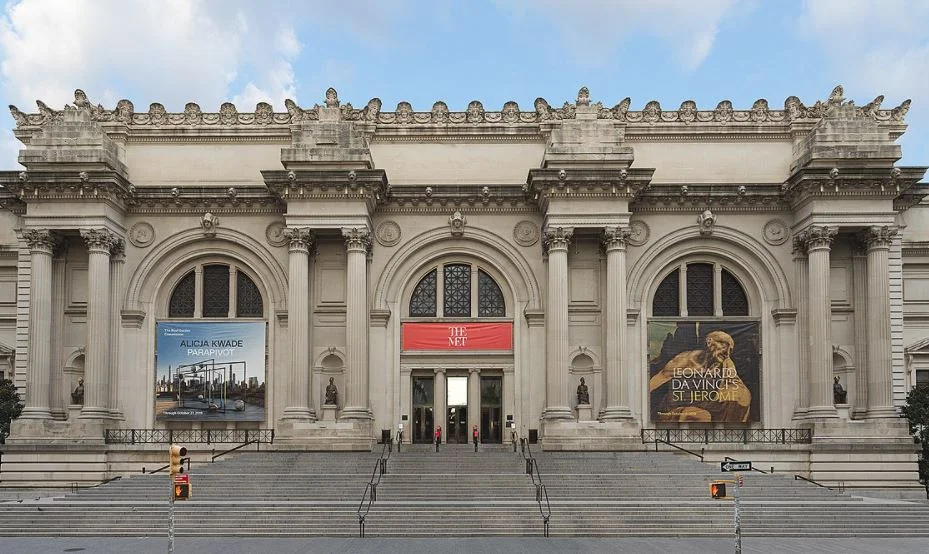
More interesting facts about The Allegory of Faith by Vermeer
6. Vermeer was an artist of delicate works that took him several months to complete. This means that he was extremely particular with the details, especially because most of his works are relatively small.
Even though it’s not his biggest work, it’s still one of the largest he produced as it has dimensions of 114.3 × 88.9 centimeters (45.0 × 35.0 inches).
7. Even though most of the symbolism was derived from Cesare Ripa’s emblem book, Vermeer didn’t follow this work in every detail. The glass sphere that hangs on the ceiling is not mentioned at all in the book.
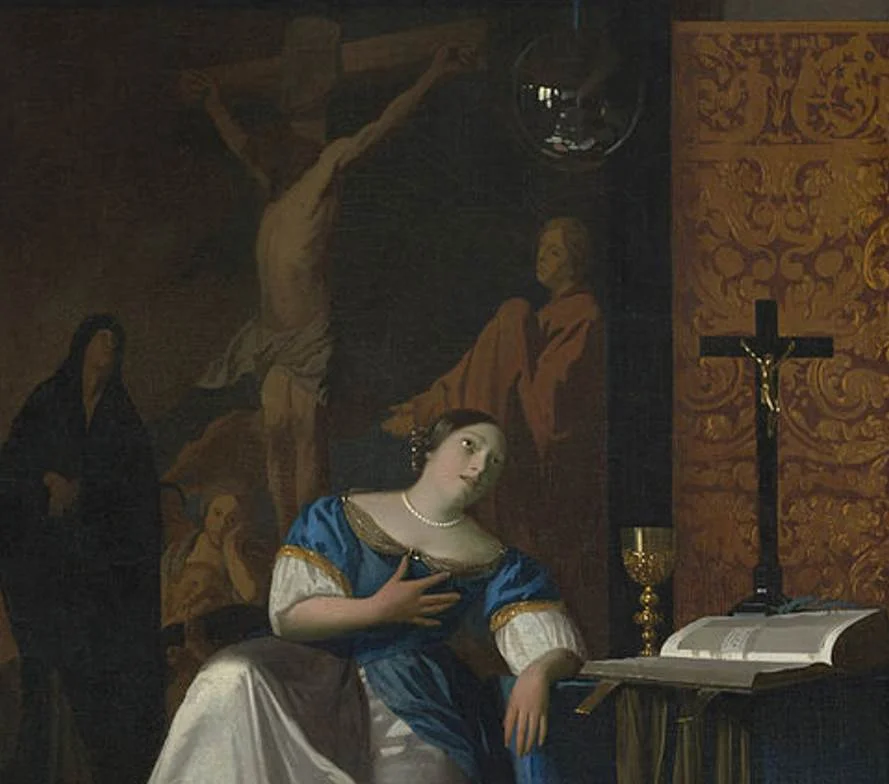
Faith also holds the chalice and rests her hand on a book but Vermeer puts them on the table next to her. This makes some art historians believe that he derived these symbols from Jesuit ideas.
8. The glass sphere has been described in a Jesuit emblem book as having “the ability to reflect the world is similar to the mind’s ability to believe in God.” He probably took this symbol from a Jesuit emblem book from 1636 called “Emblemata sacra de fide, spe, charitate.”
9. The artist probably owned a copy of the crucifixion painting on the wall, another symbol closely related to the Jesuits. This painting was probably a copy of famous Flemish painter Jacob Jordaens (1593-1678) called “Crucifixion.”
This painting was one of the paintings mentioned in an inventory made in his house following the bankruptcy of his wife.
10. Vermeer often included items that he owned in his paintings, and two of these might be on the inventory list of his house as well. These include the gilded leather decorations on the wall and the ebony wood crucifix that stands on the table.
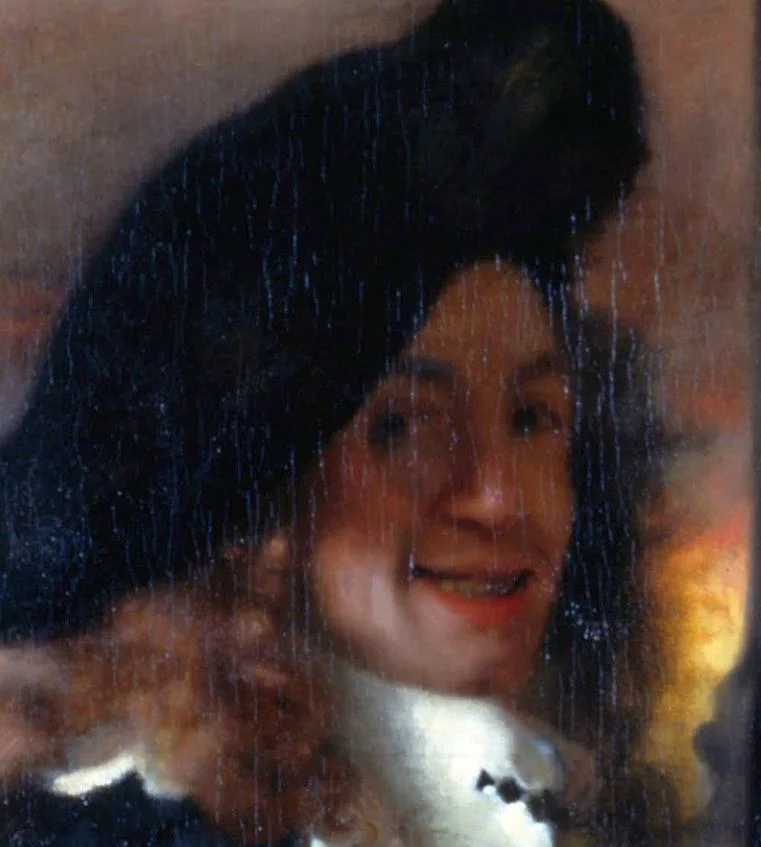
11. The Jesuit elements included by the artist might hint at the painting’s first owner. It’s assumed that he was a Catholic living in Delft, Vermeer’s hometown and a member of the Jesuits in the city.
It was not part of the 21 paintings by Vermeer owned by his main patron called Pieter Claesz van Ruijven (1624–1674). It was, however, sold in an auction in 1696 and owned by a Protestant in Delft named Herman Stoffelsz van Swoll (1632–1698).
When it was sold in an auction in Amsterdam in 1699 it was described as “A sitting Woman with deep meanings, depicting the New Testament.”
12. Even though the painting is in the collection of the MET in New York City, it’s not always on view. It’s only on public display during special exhibitions and is sometimes loaned to other famous museums around the world as well.
It was, for example, on loan at the Louvre in Paris between February 22 and May 22, 2017, and part of an extended exhibition at the MET called “In Praise of Painting: Dutch Masterpieces at The Met,” between October 16, 2018, and October 4, 2020.
